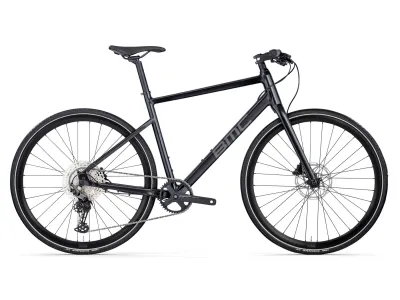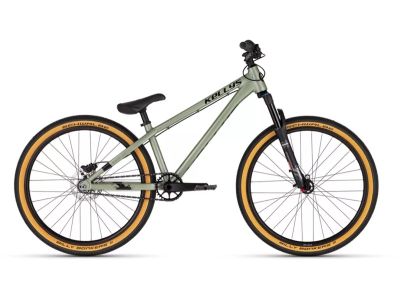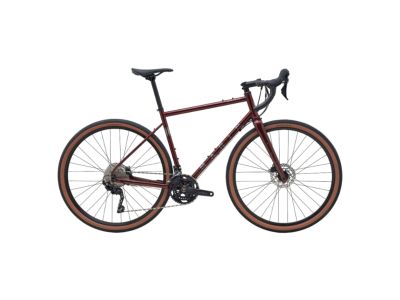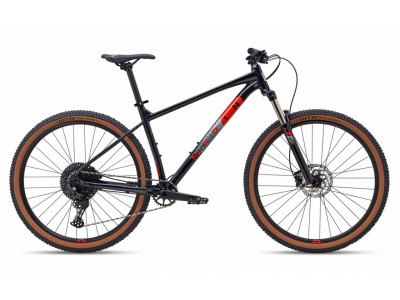When choosing a bicycle, the
preferred riding style and also the terrain in which the rider will move most often are important. It is also essential to pay attention to selecting the right size, which is crucial for the feeling of driving and comfort. Each manufacturer has a slightly different geometry, so in this case it is good to follow the
size charts listed for individual models, or consult with customer support.
What categories of bikes are there and what kind of riding are they suitable for?
- Mountain bikes or MTB: Mountain bikes are designed for off-road adventures, with robust frames, wide tires and suspension systems that can handle tough terrain. There are various sub-categories such as cross-country, trail, enduro and downhill, each catering to specific riding preferences and skill levels.
- Road bikes: Road bikes are ideal for speed and efficiency on paved surfaces, with lightweight frames, thin tires and a more aggressive riding position. They are designed for long distance driving, commuting and racing. Road bikes can be further divided into endurance, racing and aerodynamic bikes depending on the specific needs.
- Gravel bikes: Gravel bikes combine the best features of road and mountain bikes and are a versatile choice for riders looking for a combination of road and light off-road capabilities. They usually have wider tires and a more upright riding position, so they are suitable for commuting, recreational riding and light trails.
- Electric bikes: Electric bikes with the help of an electric motor provide additional pedalling power. They are available in a variety of designs including mountain, road and hybrid bikes. An e-bike is a great choice for those looking for extra help on longer rides or hilly terrain.
- Trekking bikes: Trekking bikes are versatile and suitable for both road and off-road adventures, making them an ideal choice for those who love to explore the outdoors.
- City bikes: These bikes prioritize comfort, convenience, and practicality when traversing city streets.
- Dirt and BMX: These bikes are specially designed for off-road and freestyle riding to handle jumps, ramps and other obstacles.
How to choose the right bike size?
When buying a bike online, selecting the right frame size and wheel size is very important. Don't rely on guessing the size and “winging it”! By following these simple steps, you will choose the right size for your new bike much easier:
- Check the size chart: Most reputable manufacturers provide size charts specific to each model. These charts usually show a correlation between frame size and rider height. Look for the size chart on the bike's specifications page.
- Consider your riding style and preferences: If you have longer legs or prefer a more aggressive riding position, you can lean towards a slightly larger frame size. On the other hand, if you have shorter legs or prefer a more upright riding position, a slightly smaller frame size may be more suitable. The bike can also be adapted to the rider by adjusting the saddle, stem and crank length. Don't forget that the seat and ergonomics are also affected by the geometry of the frame itself.
- Read customer reviews and recommendations: Explore customer reviews to see if there are any bike size recommendations or insights. Some bikes may be larger or smaller than expected, so it can be helpful to hear from other riders who have purchased the same model.
Pay attention to the choice of bicycle components and equipment!
Pay attention to the components of the bike, such as the drivetrain, brakes, wheels, and suspension. Components are usually divided into different levels, such as basic, medium and high-end. Higher-end components often offer better performance, durability and lighter weight, but come with a higher price tag. High-end components tend to be more complex and
may require more demanding service and maintenance, which also increases operating costs. Consider your skill level and experience as a rider. Beginners may not need the top-notch equipment, while more advanced riders can benefit from the precision and performance of top-level components. Choose equipment that matches your current abilities and riding goals. When buying a bicycle, think about the possibilities of future modernization. Some bikes and equipment grades allow for future component upgrades, providing flexibility as your skills and riding preferences evolve. When making a decision, consider the compatibility and availability of higher-end components for future upgrades to your bike.
























































